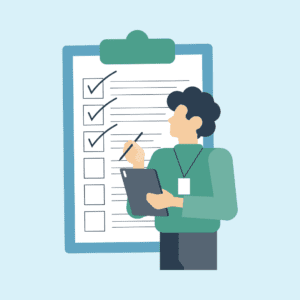Are you frustrated with anger management?
Teaching anger management strategies to kids used to leave me frustrated. Ironic, isn’t it? For years, I felt like I taught coping skills to my students until I was blue in the face, only for them to leave my office and have an outburst minutes later. I didn’t know what was happening - my students could rattle off 15 different coping skills they could use in various settings, but yet they weren’t using them. Sound familiar?
Then one day I realized what I was missing. My students weren’t able to manage their anger, because they couldn’t tell when they were getting angry - until it was too late. They couldn’t use their coping skills because they didn’t realize they were angry until after they had already yelled out in class, or hit someone.
When/if they thought about using a coping skill, their anger had gotten so intense that it didn’t work. I like to compare it to a common cold. Many times I have ignored my fatigue, runny nose, and sore throat until I was completely miserable, and ended up taking time off work. If I had taken care of myself when the symptoms first began, I would have been able to treat it much easier.
I knew I had to change the way I taught about anger. I began to introduce the idea of anger warning signs.
Anger warning signs are the signals our bodies give us that tell us that we are angry.
These look different for every person. Some people may experience sweaty palms, some people may start to shut down or get quiet, while others may lash out verbally or even physically.
I teach four categories of anger warning signs - how your body feels, how your body looks, what you say, and what you do. Once students can identify these signs, they can begin to recognize their anger.
Practical Ways to Teach Anger Warning Signs
Talk about other warning signs that students experience and are familiar with.
Anger warning signs can seem like an abstract concept, so I like to introduce it by helping them recognize other warning signs their body gives them.
I explain that warning signs (e.g., fire alarms, tornado sirens) let people know what is coming. Then, we talk about how our bodies give us “warning signs” too and these tell us what is coming, such as when we get tired, sick or hungry.
I then ask them to list ways that they can tell they are experiencing these things, and what happens if they ignore the “warning signs.” Relating their anger warning signs to concepts that they already understand helps them to better comprehend this abstract concept!

This chart can help students better understand what anger warning signs are.
Use a visual t0 help the students understand the four types of anger warning signs.
I like to create a simple chart like the one above to help students identify the symptoms they experience when they are feeling angry.
Another visual that students love is an actual warning sign. You can make one using yellow construction paper and have students write in their own anger warning signs.
Another alternative is to use the cut and paste activity from my TpT store, where students can choose from pre-populated ideas, or again, write in their own. I always tell my students to put these signs in a visible place so they can become more familiar with recognizing their anger.

I love using this cut and paste as a visual reminder to help kids recognize their anger!
Practice Recognizing the Signs
Talk about it, talk about it, talk about it! Like any anger management strategy, you need to introduce it and talk about it when the student is calm, but you can also review it with students when they are experiencing anger, and again after they have calmed down.
If you are seeing a student for a recent anger outburst, ask the student how he/she knew that he/she was angry. Encouraging the students to think about real life examples will help this concept to become less abstract, consequently becoming easier for them to apply in real life scenarios.
Once my students started to become familiar with their anger warning signs, they were able to “catch” their anger before it got too intense, and guess what?! They actually started being able to USE the coping skills that they had learned. This breakthrough has totally changed the way I teach anger management!
What are some of your favorite strategies to teach anger management? Share in the comments.








